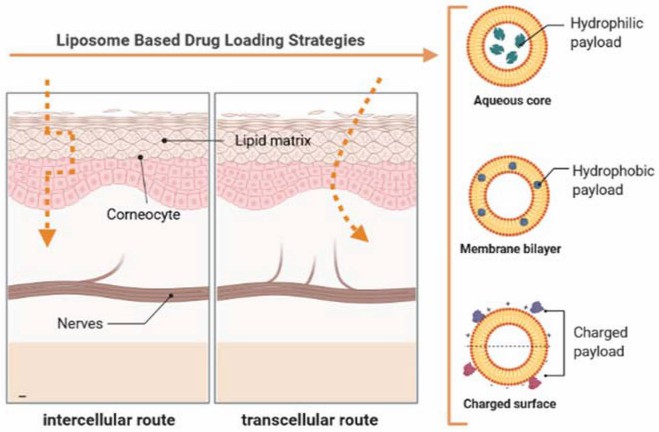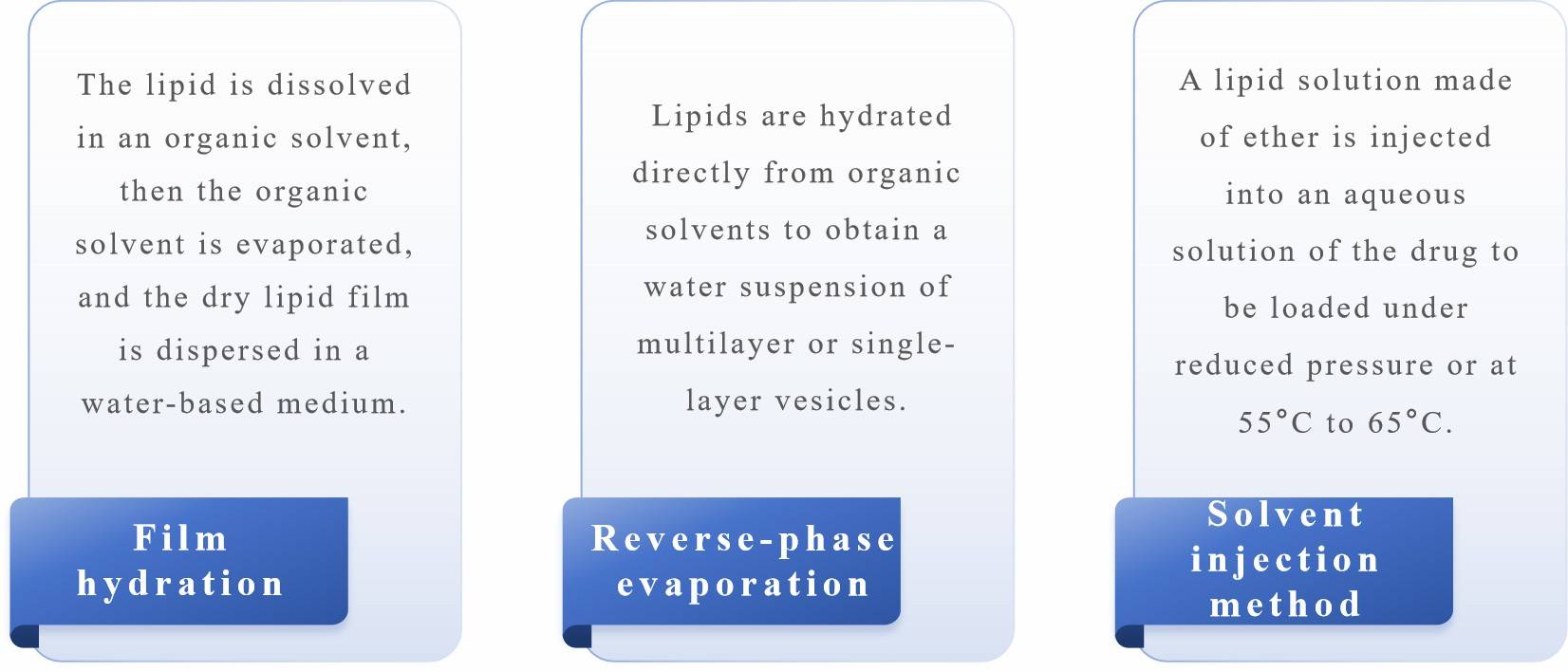Liposome Transdermal Patch Development
Inquiry
Liposome transdermal patch technology is revolutionizing the landscape of medication administration by offering a non-invasive, highly efficient, and precise approach to drug delivery. CD Formulation specializes in providing expert development services for liposome transdermal patches, ensuring our clients remain at the forefront of the latest advancements in pharmaceutical technology.
About Liposome Transdermal Patches
Liposomes are tiny spherical carriers that encapsulate active ingredients within a lipid bilayer. The inner aqueous phase can hold water-soluble components, while the lipid layers enclose fat-soluble ingredients. Due to their biocompatibility, liposomes are recognized as highly effective drug delivery carriers. Integrating liposomes into transdermal patches enhances drug stability, particularly for medications sensitive to light, temperature, or pH, offering an advanced solution over conventional oral and injectable forms.
 Fig.1 Schematic representation of the compound permeation pathways on the skin (on the left). Permeation occurs mainly through the intercellular and intracellular pathways. The elastic and ultra-deformable liposomes penetrate the skin essentially through the intercellular route since the phospholipid bilayer is flexible and allows its deformation to cross the intercellular spaces. Schematic representation of an ultra-deformable liposomal system to administer APIs (on the right). (Eliana B. Souto, et al. 2021)
Fig.1 Schematic representation of the compound permeation pathways on the skin (on the left). Permeation occurs mainly through the intercellular and intracellular pathways. The elastic and ultra-deformable liposomes penetrate the skin essentially through the intercellular route since the phospholipid bilayer is flexible and allows its deformation to cross the intercellular spaces. Schematic representation of an ultra-deformable liposomal system to administer APIs (on the right). (Eliana B. Souto, et al. 2021)
Our Liposome Transdermal Patch Development Services
Deformable Liposomes
Deformable liposomes can maintain their structural integrity as they pass through the skin's tightest joints and carry their payloads into circulation throughout the body. The role of edge activators in deformable liposomes is to disrupt the stability of the lipid bilayer, thereby increasing the deformability of the vesicles and enhancing their ability to penetrate the skin.
Ethosomes
Alcohols are fluid lipid vesicles containing relatively high concentrations of ethanol and have the potential for transdermal drug delivery. The addition of ethanol makes them soft and flexible colloidal carriers with a single or multilayer structure and concentric phospholipid bilayer surrounding the aqueous phase and encasing the drug. The size of the vesicles is much smaller than that of conventional liposomes, and the presence of high ethanol content makes its size independent of phospholipid concentration.
Lipid Nanoparticles
Solid lipid nanoparticles are composed of solid lipids, such as monoglycerides, diglycerides, triglycerides, fatty acids, steroids, and waxes. Solid lipid nanoparticles have the advantages of industrial large-scale production, slow-release effect, improved bioavailability, and tolerance in vivo.
Types of Patches We Can Develop
- Therapeutic Research Applications
Psoriasis and Eczema: The Liposome Transdermal Patch can deliver corticosteroids, immunosuppressants, or other active ingredients directly to the skin, providing targeted treatment for conditions like psoriasis and eczema. This localized delivery minimizes systemic exposure and reduces the risk of side effects commonly associated with these drugs.
Chronic Pain Relief: These patches provide sustained delivery of analgesics or anti-inflammatory drugs, offering consistent relief for conditions like arthritis and neuropathic pain.
Anti-Aging and Skin Rejuvenation: The ability to deliver bioactive molecules such as retinoids, peptides, or antioxidants directly to the skin makes this technology attractive for anti-aging and rejuvenation treatments. The patch can provide a sustained release of these ingredients, enhancing their efficacy in improving skin texture, reducing wrinkles, and promoting collagen production.
Liposome Preparation Techniques
- Film Hydration: This method involves dissolving lipids in an organic solvent and then evaporating the solvent under a vacuum rotary evaporator to form a film. Next, an aqueous phase medium is added to the film for hydration, resulting in stable multilamellar vesicles (LMVs).
- Reverse-phase Evaporation: This method involves dissolving phospholipids in an organic solvent and an aqueous buffer, creating a water-in-oil emulsion through ultrasonication. Subsequently, the organic solvent is evaporated under a vacuum rotary evaporator until a viscous gel forms. Finally, the evaporation process continues to remove residual solvent, resulting in liposomes. This method can efficiently encapsulate both small and large molecules but requires exposure to organic solvents and short periods of ultrasonic treatment.
- Solvent Injection Method: This is a rapid and straightforward preparation technique. Lipids are dissolved in a water-soluble organic solvent, and the solution is quickly injected into a vigorously stirred aqueous phase using a syringe, forming liposomes. This method avoids high temperatures and shear stress, making it suitable for rapid production.
 Fig.2 Preparation technology of liposomes. (CD Formulation)
Fig.2 Preparation technology of liposomes. (CD Formulation)
Why Choose CD Formulation?
- Our company's deep expertise in liposome formulation and drug delivery technology provides a significant edge in developing highly effective and stable Liposome Transdermal Patches. This allows for the encapsulation of a wide range of active pharmaceutical ingredients (APIs) with enhanced stability and bioavailability.
- With a dedicated R&D team, our company is at the forefront of innovation, continuously exploring new ways to optimize liposome-based transdermal patches.
- Our ability to customize liposome formulations enables the development of transdermal patches that are tailored to specific research needs.
Published Data
Technology: Technology for Liposome Transdermal Patch
Journal: Int J Mol Sci
IF: 4.9
Published: 2021
Results: Administration of active pharmaceutical ingredients (APIs) through the skin, using topical drug delivery systems, is an advanced therapeutic approach. As the skin is the largest organ of the human body, primarily acting as a natural protective barrier against the permeation of xenobiotics, specific strategies to overcome this barrier are needed. Liposomes are nanometric-sized delivery systems composed of phospholipids, key components of cell membranes, making liposomes well-tolerated and devoid of toxicity. As their lipid compositions are similar to those of the skin, liposomes are used as topical, dermal, and transdermal delivery systems. However, the first generation of liposomes through the skin posed some limitations; thus, a second generation has emerged, overcoming permeability problems. Various mechanisms of permeation/penetration of elastic/ultra-deformable liposomes into the skin have been proposed; however, debate continues on their extent/mechanisms of permeation/penetration. In vivo, the bioavailability of an API administered in the form of ultra-deformable liposomes is similar to the bioavailability achieved when the same API is administered in the form of a solution by subcutaneous or epi-cutaneous injection, which demonstrates their applicability in transdermal drug delivery.
By leveraging these advantages, CD Formulation is well-positioned to lead the research and development of liposome transdermal patches, offering innovative solutions that address key challenges in drug delivery. If you have any needs, please do not hesitate to contact us, and our colleagues will contact you within three working days.
References
- Eliana B. Souto, Ana S. Macedo, et al. Elastic and Ultradeformable Liposomes for Transdermal Delivery of Active Pharmaceutical Ingredients (APIs). Int J Mol Sci. 2021 Sep; 22(18): 9743.
How It Works
STEP 2
We'll email you to provide your quote and confirm order details if applicable.
STEP 3
Execute the project with real-time communication, and deliver the final report promptly.
Related Services

 Fig.1 Schematic representation of the compound permeation pathways on the skin (on the left). Permeation occurs mainly through the intercellular and intracellular pathways. The elastic and ultra-deformable liposomes penetrate the skin essentially through the intercellular route since the phospholipid bilayer is flexible and allows its deformation to cross the intercellular spaces. Schematic representation of an ultra-deformable liposomal system to administer APIs (on the right). (Eliana B. Souto, et al. 2021)
Fig.1 Schematic representation of the compound permeation pathways on the skin (on the left). Permeation occurs mainly through the intercellular and intracellular pathways. The elastic and ultra-deformable liposomes penetrate the skin essentially through the intercellular route since the phospholipid bilayer is flexible and allows its deformation to cross the intercellular spaces. Schematic representation of an ultra-deformable liposomal system to administer APIs (on the right). (Eliana B. Souto, et al. 2021) Fig.2 Preparation technology of liposomes. (CD Formulation)
Fig.2 Preparation technology of liposomes. (CD Formulation)
